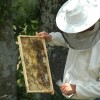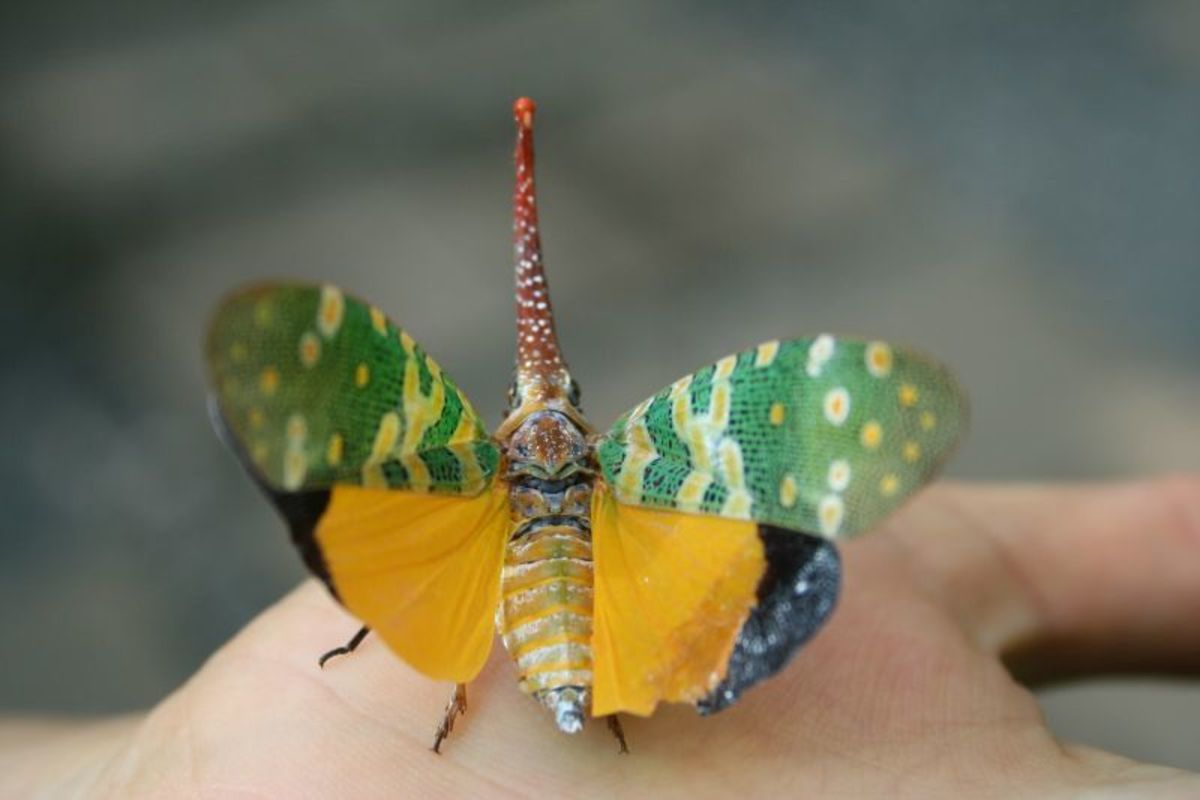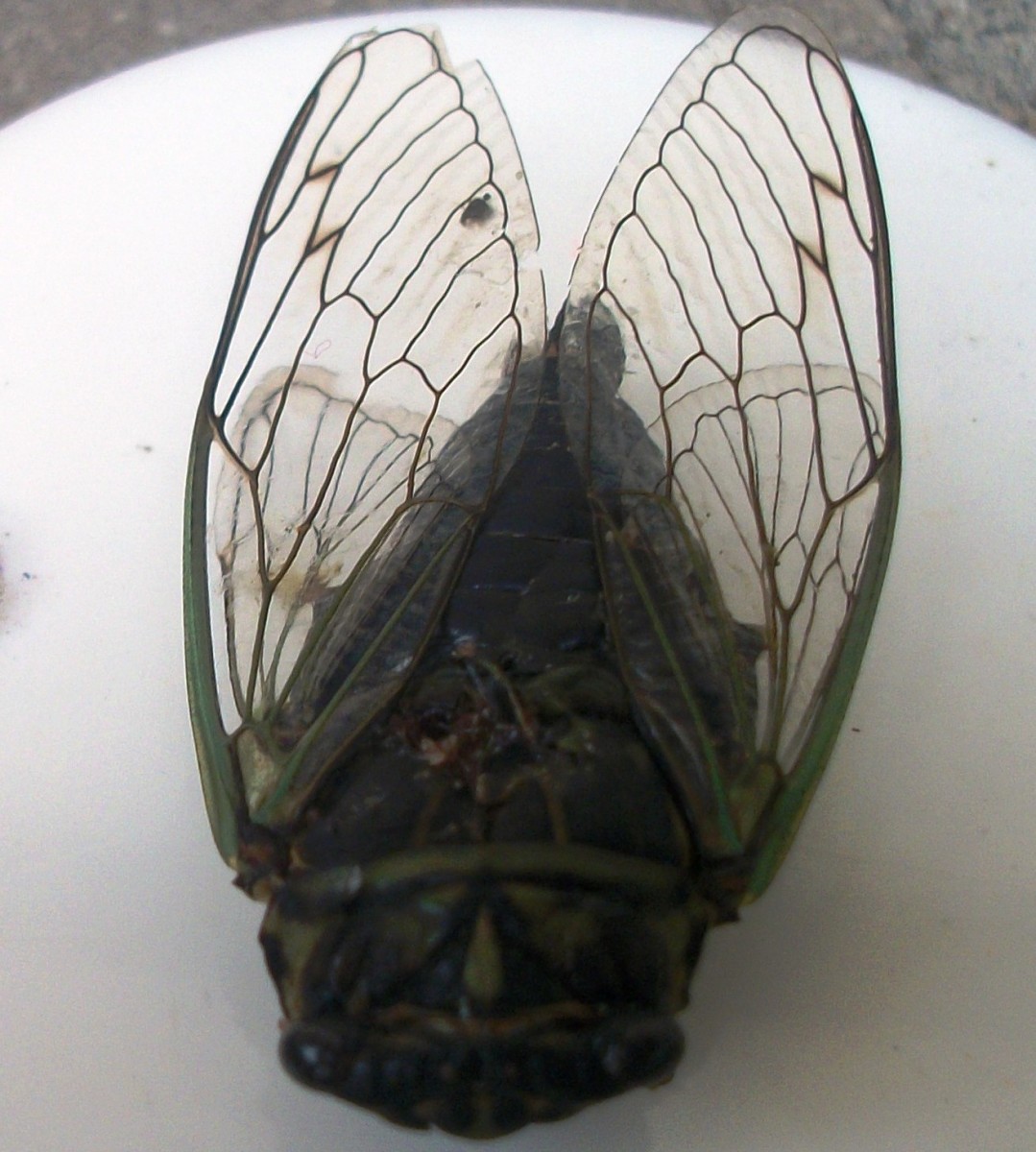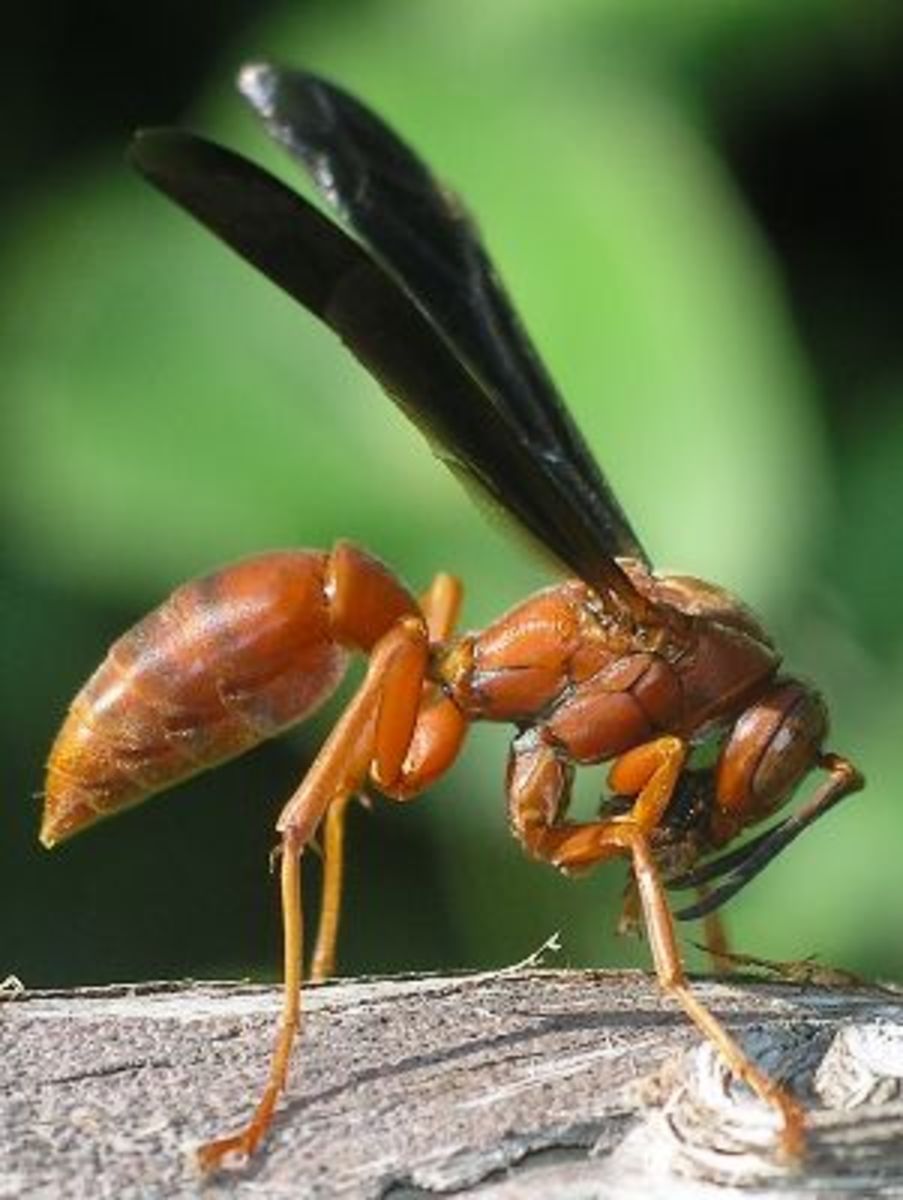- HubPages»
- Education and Science»
- Life Sciences»
- Entomology
What Insects Eat
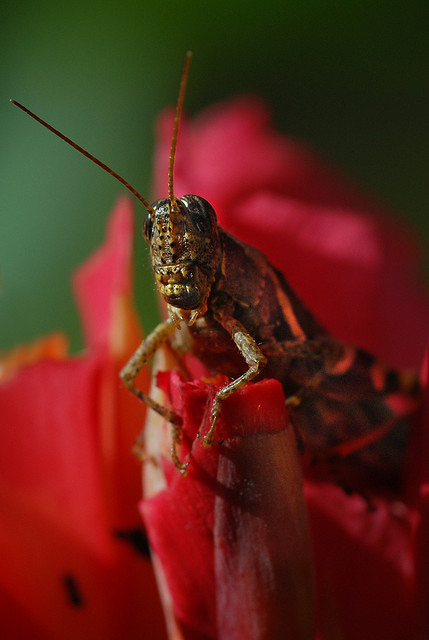
Just About Any Organic Material Is Food To Some Insect
In terms of numbers, insects are some of the most successful creatures on the planet. One of the reasons for this success has been their ability to evolve and take advantage of available food resources. Within the world of insects in general, the range of diets is incredibly diverse; it seems that every possible food resource is exploited. However, when we look at individual species of insects, we often find that their diet is narrow and specialized.
Classifying Insect Feeding Behavior
When we attempt to classify the feeding behavior of insects, we need to remember that we are imposing a neat structure on a messy reality. Some things just aren’t going to fit neatly into our system. Having said that, insects can be broadly classified by the types of food eaten:
- Phytophagous – eats plants
- Carnivorous – eats animals
- Saprophagous – eats dead and decaying plant and animal debris
- Omnivorous – eats both plants and animals
The Insects' World
Insects are creatures with three pairs of legs,
Some swim, some fly; they lay millions of eggs.
They don't wear their skeletons in, but out.
They come in three parts. Some are bare; some have hair.
Their hearts are in back; they circulate air.
They smell with their feelers and taste with their feet,
And there's scarcely a thing that some insect won't eat:
Flowers and woodwork and books and rugs,
Overcoats, people, and other bugs.
When five billion trillion keep munching each day,
It's a wonder the world isn't nibbled away!
- Ethel Jacobson
Feeding Behavior Often Changes from One Stage of an Insect’s Lifecycle to Another
Butterflies (Lepidoptera) are a good example of this change. As a caterpillar (the larval stage in the butterfly lifecycle) many species of butterflies feed on plant leaves, then as an adult, the butterfly feeds on the nectar of flowers. The caterpillar has chewing mouthparts, the adult can’t chew at all, but has a long tube like proboscis for sucking up nectar.
In the example above, the feeding behavior changes, but the butterfly remains phytophagous throughout its lifecycle. There are examples of more extreme change in feeding behavior, even among butterflies.
The larva of the Large Blue butterfly (Maculinea arion) feeds on the larva of a particular species of ant, Myrmica sabuleti. Early in its development, the larva of this butterfly feeds on the flowers of thyme plants; in the final stage of its larval development, it drops to the ground and waits for an ant to find it. If all goes well, it will be found by an ant of M. sabuleti. It is not clear what triggers the ant’s behavior toward the butterfly larva, but the ant then feeds the larva and carries it down into the ant colony’s broodnest. Once inside the ants’ broodnest, the butterfly larva feeds on the ant larvae for about nine months until it pupates into an adult.
Over the course of its lifecycle, what the Large Blue butterfly eats changes three times. In the earliest stages of its development, it eats thyme flowers; in the last stage of larval development, it eats ant larvae; and as an adult, it feeds on nectar.
Some Insects Do Not Eat Anything
As we have seen, how we answer the question “What do insects eat?” depends on the stage of an insect’s lifecycle. Some insects don’t feed at all in certain stages. In its larval stage, the crane fly (Diptera) is saprophagous; it eats decomposing organic matter, but as an adult it doesn’t eat at all.
Many Insect Diets are Specialized
Some insects, like cockroaches, are omnivorous and opportunistic feeders. This is one of the reasons that cockroaches are so successful; they will take advantage of any available food resource and have been reported feeding on hair, paper, book bindings, even putrid sake.
Other insects have a very specialized diet. The Salvinia weevil (Cyrtobagous salviniae) eats nothing but a couple of species of the plant genus Salvinia. It prefers Salvinia molesta, a water plant that is an invasive species in many parts of the world and chokes out waterways. Because of its specialized diet, the weevil has been used with great success to control this problem plant.
A Simple Question With a Complex Answer
As we have seen, how we answer the question “What do insects eat?” depends on the perspective we take. If we look at the entire class of animals called insects, the answer is almost anything organic. It seems that no food resource remains unexploited by some type of insect. However, when we look at individual insect species we find that many have very specialized diets and that often what they eat changes as they go through their lifecycle.
An Interesting Example of Honeybee Feeding Behavior
Below is a great video of a bee collecting honeydew. Most people think that bees only use nectar to produce honey, not so. Honey bees will also collect sugary secretions produced by aphids and scale insects. These secretions are called honeydew and the bees use it like nectar to produce honey, sometimes in significant amounts.
Honeybee Collecting "Honeydew"
Sources
Barbara, K. (2000). American cockroach. In T. Fasulo (Ed.),Featured Creatures University of Florida. Retrieved from http://entnemdept.ufl.edu/creatures/urban/roaches/american_cockroach.htm
Crane fly. (n.d.). Retrieved from http://insects.tamu.edu/fieldguide/bimg215.html
Elzinga, R. J. (1987).Fundamentals of entomology. Englewood Cliffs: Prentice-Hall.
Gullan, P. J., & Cranston, P. S. (2005).The insects: An outline of entomology. (third ed.). Malden, MA: Blackwell.
Lobanov, A. L. (2002).Feeding. Retrieved from http://www.zin.ru/Animalia/Coleoptera/eng/biol3.htm
Preston-Mafham, K. and Preston-Mafham, R. (2005) Encyclopedia of insects and spiders. San Diego: Thunder Bay Press
More by Wib Magli
- When Bees Are Most Likely To Sting: Honeybee Colonie...
Bees can sting, we all know that. And, let’s be honest, everybody knows that females of any species can be a bit moody. Apply this dictum to a colony of honeybees, which are nearly all female, and the occasional bee sting is inevitable. While the... - Urban Beekeeping For Beginners
Honey bees can thrive in the city. Urban beekeeping is possible, but requires a few special considerations. - Propolis Benefits
Propolis is a resinous substance that honey bees collect from plants. Bees use propolis in a variety of ways. People have harvested propolis from beehives for centuries, primarily to use medicinally. - Local Honey and Allergies: Does Eating Local Honey H...
I Would Like This To Be True, But I am Skeptical I raise bees that produce honey, which I harvest and sell. We sell all our honey locally. The demand for local honey seems to be driven in large part by the idea that local honey helps to prevent... - Bee Pollen: Benefits and Health Effects
Bee pollen is pollen that has been collected by honey bees. Many health related claims are made for bee pollen, but data to support these claims is lacking. - Raising Bees
Raising honey bees is a unique and fascinating pastime. This article explains how to get started in beekeeping so that you have the greatest chance of success.
